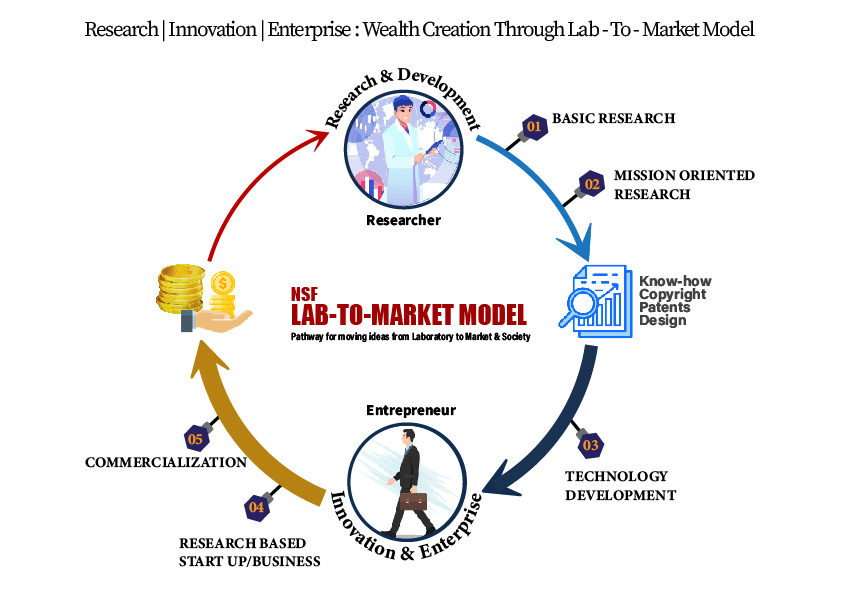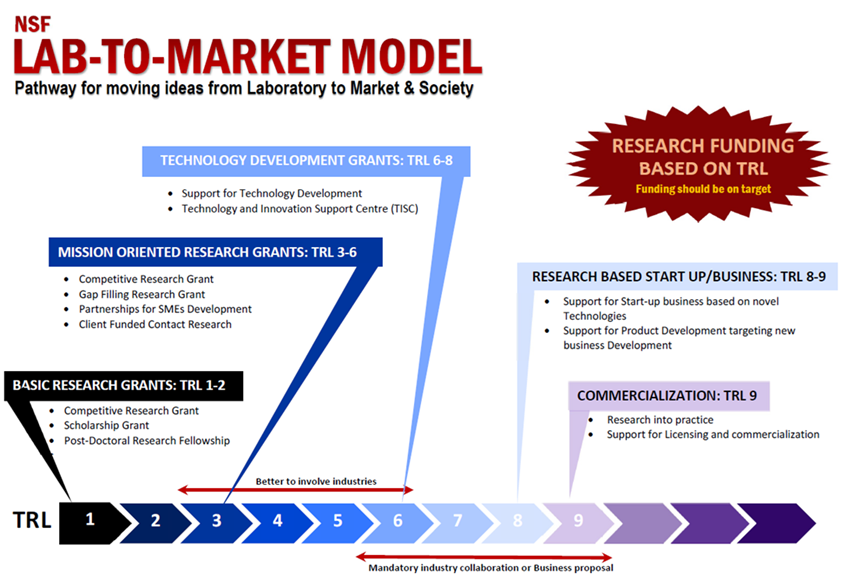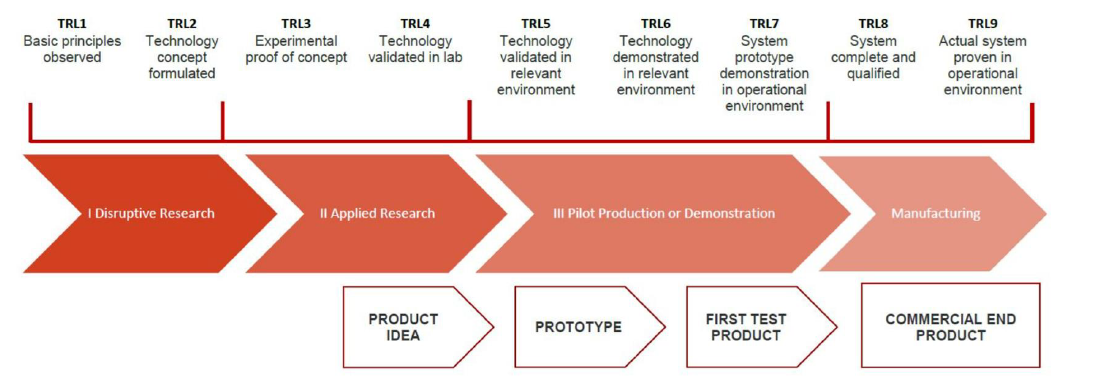
From Discovery to Delivery
The National Science Foundation (NSF) of Sri Lanka is a statutory body established in 1998 by the Science and Technology Development Act No. 11 of 1994, as the successor to the Natural Resources, Energy & Science Authority of Sri Lanka (NARESA) established in 1981, and the National Science Council (NSC) set up in 1968. The NSF takes the lead role in promoting Science, Technology and Innovation in the country, operating under the purview of the Ministry of Education, Science and Technology. Accordingly, the NSF has provided its dedicated service to the nation for over 56 years since its inception.
The NSF plays a pivotal role in supporting and strengthening the National Research, Development, and Innovation Ecosystem to promote wealth creation and ensure the wellbeing of the citizens of Sri Lanka while ensuring environmental sustainability. To facilitate this, the NSF introduced “NSF Lab to Market” model which provides pathways for researchers, inventors, innovators, technopreneurs, Micro, Small and Medium Enterprises and aspiring entrepreneurs to transition their ideas from the laboratory to the market and society.
When analyzing the gap in research commercialization, several critical elements become apparent. Key issues include the lack of continuation of promising research and insufficient collaboration among industry, universities, and R&D institutions. These gaps often result in less mission-oriented industrial research, stalling the potential impact of innovative discoveries. The NSF Lab to Market model addresses these challenges comprehensively by providing various grant schemes to ensure the continuation of research efforts until the commercialization of findings and innovations. This sustained support is crucial for transforming theoretical research into practical applications.
NSF Lab to Market model facilitates the seamless flow of ideas and expertise among various stakeholders, fostering networking and collaborations, funding mechanisms to support early-stage research and development, grassroots level inventions and innovations, industrial research, initiation of new businesses based on novel technologies and the commercialization of these technologies.
In addition, the NSF model fosters the triple-helix model, which promotes robust collaboration among academia, industry, and the government. This collaborative framework not only bridges the gap between research and market but also enhances the relevance and applicability of academic research. By aligning the goals and resources of these three sectors, the model creates a synergistic environment where innovations can thrive and reach their full potential. Notably, 40% of the NSF research funds are allocated for innovation and entrepreneurship. This allocation promotes translational research and the creation of value-added products, processes, and services via R&D, enabling them to compete in local and international markets.
This holistic approach ensures that innovations are not only developed, but also successfully brought to market, ultimately benefiting the society at large.
Fig 01: Research, Innovation and Enterprise; Wealth Creation through Lab to Market Model
NSF Lab to Market model is supported by twelve different programmes designed to facilitate this process.
Fig 02: NSF Lab to Market Model: Pathway for moving ideas from lab to market and society
Different stakeholders can join this pathway at various stages, ensuring flexibility and inclusivity throughout the innovation process;
- Researchers can begin from basic research (TRL 1) and progress to commercialization stage.
- Researchers and Industry partners can begin from applied research (TRL3) and progress to commercialization stage.
- Inventors/Innovators can begin from product ideas that have commercial potential (TRL 4) and progress to commercialization stage.
- Entrepreneurs can begin from novel technology (TRL8) and progress to commercialization stage.
Fig 03: Pathway for Researchers, Innovators, Entrepreneurs and Industry moving ideas from lab to market
Basic research involves experimental or theoretical work aimed primarily at acquiring new knowledge about the fundamental aspects of phenomena and observable facts, without any specific application or use in mind. In Sri Lanka, there are only 106 researchers per million inhabitants, compared to 256 in South Asia and 7,225 in Singapore. This measure of researcher intensity is crucial as it influences the number of patents filed and contributions to scientific journals. To attract youth to pursue research and encourage them to stay and work in Sri Lanka, grant schemes such as Research Scholarships, Competitive Research Grants, and Post-Doctoral Research Fellowship Programmes have been implemented.
- Competitive Research Grant
- Research Scholarship Grant
- Post-Doctoral Research Fellowship






